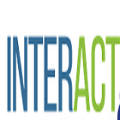Selective exposure to online news consumption reinforces filter bubbles, restricting access to diverse viewpoints. Interactive systems can counteract this bias by suggesting alternative perspectives, but they require real-time indicators to identify selective exposure. This workshop paper proposes the integration of physiological sensing, including Electroencephalography (EEG) and eye tracking, to measure selective exposure. We propose methods for examining news agreement and its relationship to theta band power in the parietal region, indicating a potential link between cortical activity and selective exposure. Our vision is interactive systems that detect selective exposure and provide alternative views in real time. We suggest that future news interfaces incorporate physiological signals to promote more balanced information consumption. This work joins the discussion on AI-enhanced methodology for bias detection.
翻译:暂无翻译



